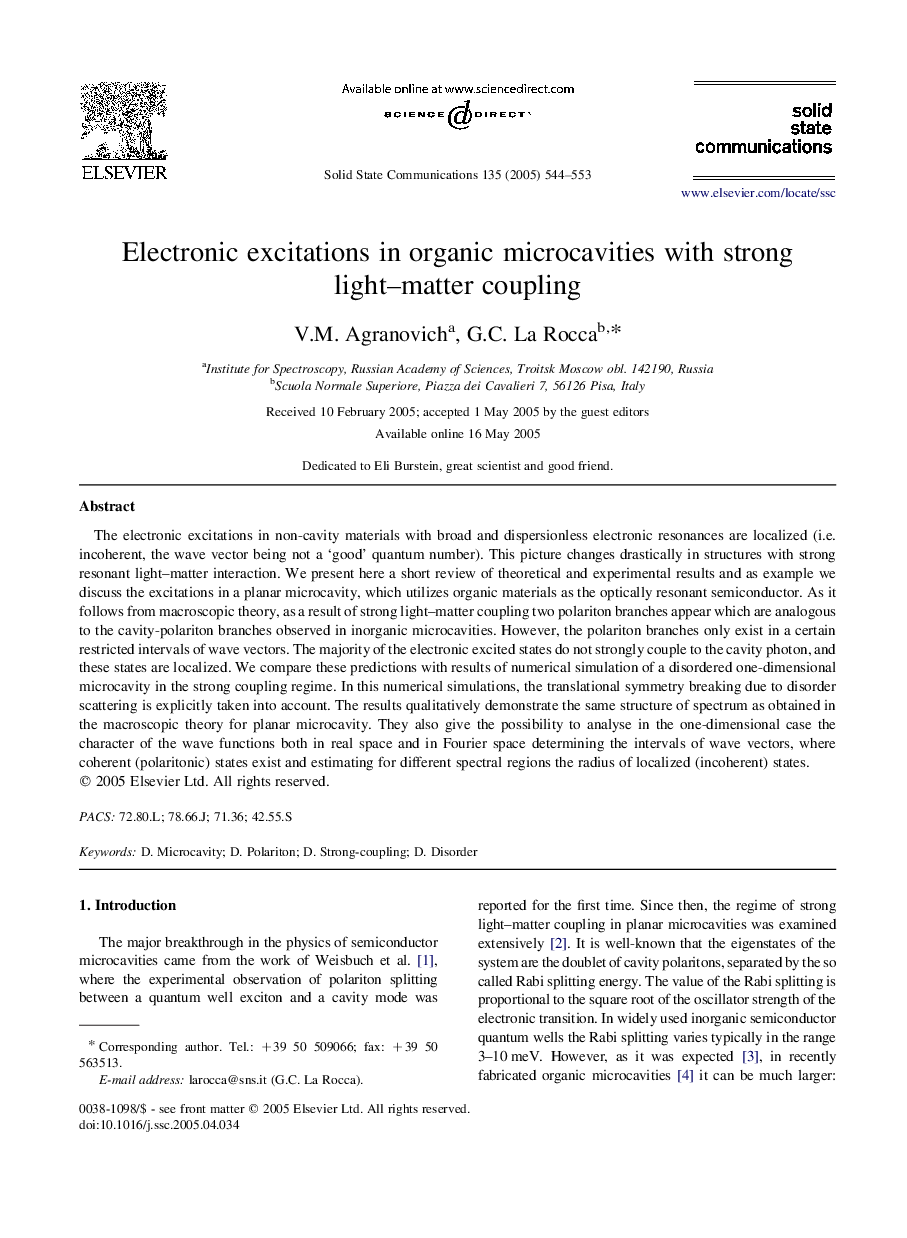| Article ID | Journal | Published Year | Pages | File Type |
|---|---|---|---|---|
| 9801928 | Solid State Communications | 2005 | 10 Pages |
Abstract
The electronic excitations in non-cavity materials with broad and dispersionless electronic resonances are localized (i.e. incoherent, the wave vector being not a 'good' quantum number). This picture changes drastically in structures with strong resonant light-matter interaction. We present here a short review of theoretical and experimental results and as example we discuss the excitations in a planar microcavity, which utilizes organic materials as the optically resonant semiconductor. As it follows from macroscopic theory, as a result of strong light-matter coupling two polariton branches appear which are analogous to the cavity-polariton branches observed in inorganic microcavities. However, the polariton branches only exist in a certain restricted intervals of wave vectors. The majority of the electronic excited states do not strongly couple to the cavity photon, and these states are localized. We compare these predictions with results of numerical simulation of a disordered one-dimensional microcavity in the strong coupling regime. In this numerical simulations, the translational symmetry breaking due to disorder scattering is explicitly taken into account. The results qualitatively demonstrate the same structure of spectrum as obtained in the macroscopic theory for planar microcavity. They also give the possibility to analyse in the one-dimensional case the character of the wave functions both in real space and in Fourier space determining the intervals of wave vectors, where coherent (polaritonic) states exist and estimating for different spectral regions the radius of localized (incoherent) states.
Related Topics
Physical Sciences and Engineering
Materials Science
Materials Science (General)
Authors
V.M. Agranovich, G.C. La Rocca,
